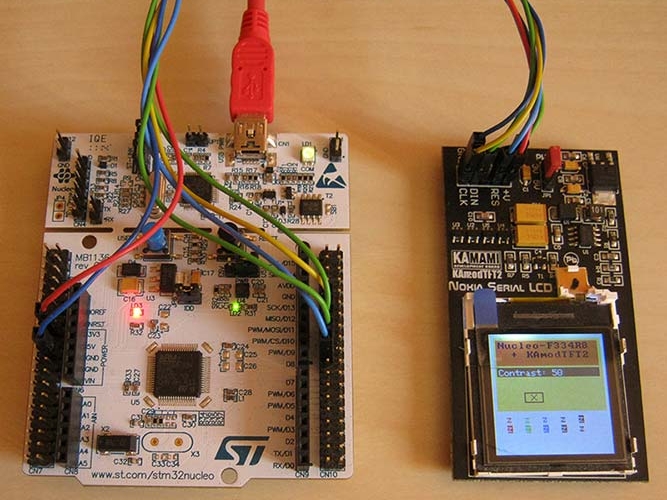

- #MCP9808 STM32 DRIVER SERIAL#
- #MCP9808 STM32 DRIVER DRIVERS#
- #MCP9808 STM32 DRIVER DRIVER#
- #MCP9808 STM32 DRIVER CODE#
you could also contain all the extra info such as baud rate etc.
#MCP9808 STM32 DRIVER CODE#
your application code simply uses the HAL's uart_read() and uart_write() calls to do it's business.Īs far as structure, you're right, you can use a global struct with function pointers.

#MCP9808 STM32 DRIVER DRIVER#
the HAL functions wrap the driver specific functions. uart_read(), uart_write(), and in the implementation of those functions you call your hardware specific functions. In the HAL you write generic functions e.g. however realize the the HAL is the abstraction layer. You are right though, (sensor.c) is the only one that should know about the driver APIs (in hal_usart.c). You're on the right track, but you're kind-of doubling the abstraction. If you have hidden away your code dependencies for the application programmer, then are making it painful for them to trouble-shoot such errors. Nothing is more annoying that grabbing some 3rd party code and getting compiler errors for "missing function blabla". c file, in order to document code dependencies to the one using your code. I always place includes in the header rather than in the. Meaning that stm32_usart.h should include the relevant library for that, but the library calling code will be placed inside the driver. If you need such an interrupt, you'll likely either need a ring buffer ADT or some DMA library (always go with DMA if available, they tend to be painful to set up, but they do wonders for real-time performance). This is highly MCU-specific but probably not needed in most Cortex M implementations.) (Though if you need to add the interrupt to a vector table written in C, you may have to expose the function prototype of the ISR in the header, so that the vector table can use the ISR name. c file and usart_receive should be the one to communicate with the ISR.

If so, that one should be in hidden inside the. You can expand the functionality as needed: perhaps you need an rx interrupt. The simplest form of calling code might look something like: usart_result_t result Īnd so on, this for the simplest form of busy-wait polling. stm32_usart.c implements these functions. Usart_result_t usart_receive (uint8_t* data, size_t buf_size, size_t* data_received) Īnd that's pretty much it. Usart_result_t usart_send (const uint8_t* data, size_t size) * pick parameters to suit whatever functionality you wish the driver to include here, Usart_result_t usart_init (uint32_t baudrate_hz. Typedef enum // some error handling type for this driver

If you have no such special requirements, then the additional HAL is just bloat and you should implement the simplest form of a UART driver: // stm32_usart.h That's where "opaque types", function pointers and all that comes in - only then.
#MCP9808 STM32 DRIVER SERIAL#
If so, it would make sense to wrap the UART in an additional HAL so that your serial library code becomes portable between different microcontrollers. The only reason why you'd want a HAL between the application code and the driver is if the application is some sort of serial library: suppose you are implementing a printf-like function, an UART error logger or bootloader etc, something that you want to re-use in multiple projects. Normally there is no need to have a HAL in between that driver and the application, because UART is pretty straight-forward and simple. Normally you would have something like stm32_usart.h + stm32_usart.c making up the actual driver. HAL_USART_RX() // assuming data is stored in one of the struct members Get data via UART (calling application API) I have heard different things regarding how application code should have no clue whatsoever about the driver APIs, and read up an article the other day that you could decouple the sensor code from HAL driver code using function pointers but not sure how I could do that here, and if that will decouple it considering I'm still passing a reference to USART_Handle struct that contains info like baudRate, parit圜ontrol, wordLength, reference to USART_TypeDef etc. So I have main.c, sensor.c (application file that uses UART layer), hal_usart.c (which is the driver file).
#MCP9808 STM32 DRIVER DRIVERS#
So I'm writing drivers for UART on STM32 and even though I kind of have an idea on laying out the structure, I'd still want to clarify prior to implementing, and also considering how essential it is to keep the code clean and organized.


 0 kommentar(er)
0 kommentar(er)
